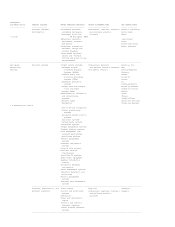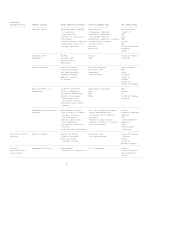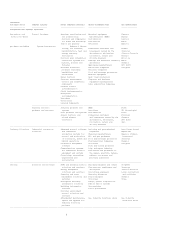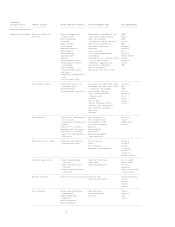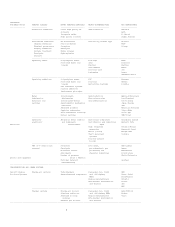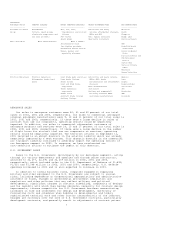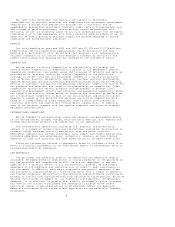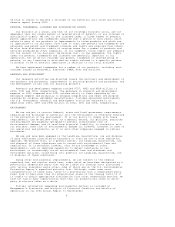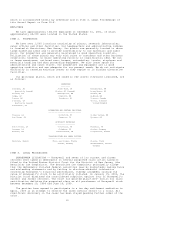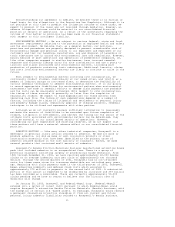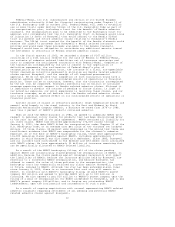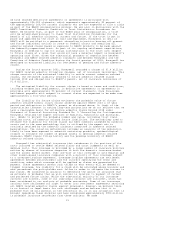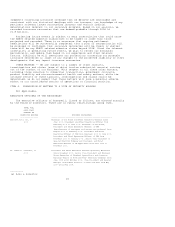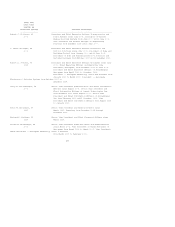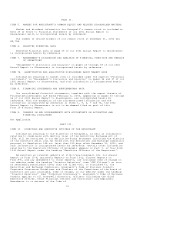Honeywell 2002 Annual Report Download - page 16
Download and view the complete annual report
Please find page 16 of the 2002 Honeywell annual report below. You can navigate through the pages in the report by either clicking on the pages listed below, or by using the keyword search tool below to find specific information within the annual report.STRATEGIC
BUSINESS UNITS PRODUCT CLASSES MAJOR PRODUCTS/SERVICES MAJOR CUSTOMERS/USES KEY COMPETITORS
-------------- --------------- ----------------------- -------------------- ---------------
Consumer Products Aftermarket Oil, air, fuel, Automotive and heavy AC Delco
Group filters, spark plugs, transmission and coolant vehicle aftermarket channels, Bosch
electronic components and filters OEMs and OES Champion
car care products PCV valves Auto supply retailers Champ Labs
Spark plugs Specialty installers Havoline/Texaco
Wire and cable Mass merchandisers Mann & Hummel
Antifreeze/coolant NGK
Ice-fighter products Peak/Old World
Windshield washer fluids Industries
Waxes, washes and Pennzoil-Quaker
specialty cleaners State
Purolator/Arvin Ind
STP/ArmorAll/
Clorox
Turtle Wax
Various Private
Label
Wix/Dana
Zerex/Valvoline
-------------------------------------------------------------------------------------------------------------------------------
Friction Materials Friction materials Disc brake pads and shoes Automotive and heavy vehicle Akebono
Aftermarket brake hard Drum brake linings OEMs, OES, brake Dana
parts Brake blocks manufacturers and aftermarket Delphi
Disc and drum brake channels Federal-Mogul
components Mass merchandisers ITT Galfer
Brake hydraulic Installers JBI
components Railway and commercial/ Nisshinbo
Brake fluid military aircraft OEMs TMD
Aircraft brake linings and brake manufacturers Roulunds
Railway linings
-------------------------------------------------------------------------------------------------------------------------------
AEROSPACE SALES
Our sales to aerospace customers were 40, 41 and 40 percent of our total
sales in 2002, 2001 and 2000, respectively. Our sales to commercial aerospace
original equipment manufacturers were 9, 12 and 11 percent of our total sales in
2002, 2001 and 2000, respectively. If there were a large decline in sales of
aircraft that use our components, operating results could be negatively
impacted. In addition, our sales to commercial aftermarket customers of
aerospace products and services were 14, 15 and 17 percent of our total sales in
2002, 2001 and 2000, respectively. If there were a large decline in the number
of flight hours for aircraft that use our components or services, operating
results could be negatively impacted. The terrorist attacks on September 11,
2001 resulted in an abrupt downturn in the aviation industry which was already
negatively impacted by a weak economy. This dramatic downturn in the commercial
air transport industry continued to adversely impact the operating results of
our Aerospace segment in 2002. In response, we have accelerated our
cost-reduction actions to mitigate the impact of this downturn.
U.S. GOVERNMENT SALES
Sales to the U.S. Government (principally by our Aerospace segment), acting
through its various departments and agencies and through prime contractors,
amounted to $2,277, $2,491 and $2,219 million in 2002, 2001 and 2000,
respectively, which included sales to the U.S. Department of Defense of $1,833,
$1,631 and $1,548 million in 2002, 2001 and 2000, respectively. U.S. defense
spending increased in 2002 and is also expected to increase in 2003.
In addition to normal business risks, companies engaged in supplying
military and other equipment to the U.S. Government are subject to unusual
risks, including dependence on Congressional appropriations and administrative
allotment of funds, changes in governmental procurement legislation and
regulations and other policies that may reflect military and political
developments, significant changes in contract scheduling, complexity of designs
and the rapidity with which they become obsolete, necessity for constant design
improvements, intense competition for U.S. Government business necessitating
increases in time and investment for design and development, difficulty of
forecasting costs and schedules when bidding on developmental and highly
sophisticated technical work and other factors characteristic of the industry.
Changes are customary over the life of U.S. Government contracts, particularly
development contracts, and generally result in adjustments of contract prices.
7



